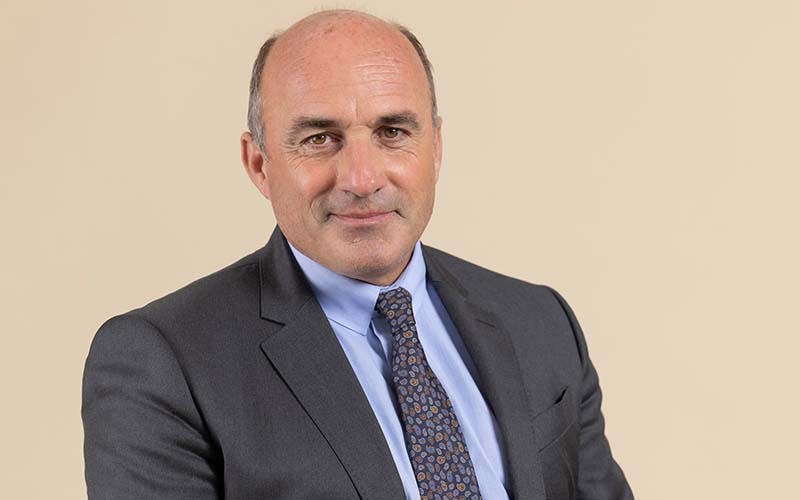Carmignac's Note

In response to inflation, we must be bold and optimistic
- Published
-
Length
4 minute(s) read

Frédéric Leroux, a member of Carmignac’s strategic investment committee, outlines three steps Europe can take in response to the return of inflation.
Inflation remains a big worry. What’s your view on the issue?
Frédéric Leroux: Inflation should ease considerably in Europe starting in September. Does that mean we should expect it to swiftly return to where it was before the pandemic, and stay there? Probably not. After being denied, played down, and then considered only “transitory”, inflation is undeniably back inflation is undeniably back and will likely stay with us for a while.
Is there anything we can do to counter this?
F.L.: It would be a mistake to think inflation can be warded off indefinitely given the structural factors reviving it: demographics that are less supportive of savings and investment, plateauing global trade, and the energy transition, to name a few. In light of the new landscape that’s taking shape whether we like it or not, there are three key steps European policymakers should explore: prompting an increase in households’ real incomes (i.e. incomes after taking inflation into account); bringing production sites back on European soil to reduce countries’ energy and manufacturing dependence; and balancing business ethics with economic efficiency.
So the first step would be to increase household incomes.
F.L.: Wages in the US are up 6% on average while inflation seems to have peaked at 8.5%. Given that inflation looks set to head back downwards, this will result in a welcome increase in real incomes, at a time when US workers are in a strong bargaining position.
What about Europe?
F.L.: In Europe, wages are up just 1.5% whereas inflation is running at around 7.5%. Governments have rolled out various measures to help fill this gap – such as “energy checks”, “rebates at the pump”, and possibly food subsidies for the most disadvantaged – but such measures can never be more than temporary. They weigh on public finances, increase households’ dependence on government support, and impede natural adjustments by masking the genuine impact of prices.
What’s the danger in this kind of situation?
F.L.: If governments don’t take measures to at least partially close the gap between wage growth and inflation, there’s a clear chance that European consumers will take to the streets.
So policymakers need to act urgently.
F.L.: Yes. We believe they should nip this issue in the bud by making it easier for businesses to bump up wages. And if policymakers don’t change their approach to running the economy – which for decades has been based on price stability – they could trigger a deep recession, obstruct any kind of lasting price stability, and amplify public debt levels. A triple whammy!
You mentioned bringing production facilities back to Europe.
F.L.: European countries must address their energy, manufacturing, and military dependence – a dependence thrown into light by the pandemic and the war in Ukraine. That will create opportunities for restoring lost manufacturing industries where needed. Here, energy will be particularly important; countries no longer have the option of trying to become or even remain a manufacturing powerhouse without securing their own energy supply.
What would be the advantages of this kind of reshoring?
F.L.: Manufacturing jobs are well-paid owing to the skills they require and the growing productivity experienced by manufacturers. Odd jobs in the services sector, like as delivery drivers, are certainly useful but are also starting to show their limitations. Reshoring can also be a way to orient households’ savings towards investments that could be profitable even in times of sustained inflation, thus aligning their interests with those of the government.
Are employee stock-ownership plans a step in this direction?
F.L.: An additional, virtuous method for linking incomes to inflation would be to encourage schemes that give employees a share of their companies’ profits, provided that the schemes include at least some degree of incentives and protection. Several large companies have recently introduced new employee stock-ownership plans, for example.
What about the third step you mentioned, of balancing business ethics with economic efficiency?
F.L.: This third response is complementary to the other two. It will require bringing economics back into the equation, since the quest for a more principled economy shouldn’t distract us too much from the reality on the ground. This applies to geopolitics just as much as energy supplies.
Can you explain?
F.L.: How much energy is available, and where, depends on physical factors that we can’t ignore. The challenges we’re currently facing indicate that, when it comes to the energy transition, policymakers are wanting to move too fast. This is further driving up inflation and could trigger imbalances between energy supply and demand. If policymakers and economic agents once again base their most “impactful” decisions on real-world facts, the phase we’re now going through could be an auspicious one – with a little imagination and bold thinking – and usher in an era of more widely shared prosperity.
You mean an era like the Trente Glorieuses in France?
F.L.: That vibrant, 30-year period of rapid economic expansion between 1950 and 1980 has some similarities with what we’re seeing today: a generally inflationary climate, a reconstruction of the domestic manufacturing base, and a rising middle class that’s helping to restore a positive dynamic to the economy.
What does all that mean for investors?
F.L.: With inflation back in the picture, we can expect major changes in the way investment portfolios are managed. This could mark the beginning of a more pronounced business cycle – that is, the natural ups and downs in a country’s gross domestic product, or GDP – after a pretty much stagnant 12 years, potentially leading to alternating periods of outperformance between different types of financial assets (between stocks and bonds, the US dollar and gold, etc.). Such a scenario would restore active fund managers to their former glory, since they would have opportunities to quickly spot inflexion points in the business cycle.
-
What is meant by “active” fund management?
Active fund managers selectively buy financial assets (like stocks, bonds, and currencies) based on their views of which ones will outperform, making sure to buy those assets at just the right time. This is opposed to passive investing, which entails simply tracking a market index.
Sources: Carmignac, Bloomberg, 17/05/2022